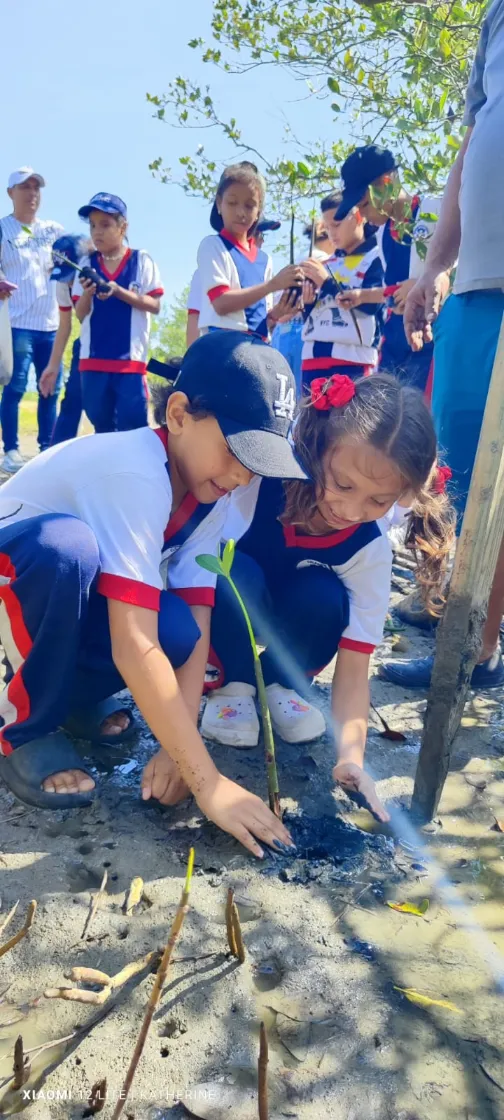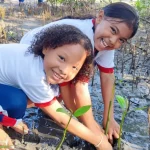Teacher: Katherine Parrado Méndez
Programa ‘Entre olas y raíces: Educar para conservar’ (Programme ‘Between waves and roots: educating for conservation’)

Katherine Parrado Méndez
Katherine is a natural sciences teacher, a biology graduate and a specialist in environment and local development. She also holds a master’s degree in education and has ten years of experience in the education sector working with children and adolescents. She is a co-founder of the Gamanobi Project, an organization that seeks to educate about the conservation of biodiversity.
She is currently a primary school teacher in the city of Barranquilla, in the San Vicente de Paul district educational institution. Her greatest motivation as a teacher is to get children and adolescents to become critical citizens who care for, defend and recognise the natural wealth of their territories and thus have a harmonious relationship with their planet.
Usefull links related to the Solution
Overview
Katherine’s solution integrates elements of her school’s environmental context into the academic curriculum, such as the recognition of biodiversity, the importance of ecosystems and the identification of environmental problems in the area, especially the recognition and acquisition of knowledge about the Mallorquin swamp, one of the most important mangrove ecosystems in the region.
Theory of Change
One of the main problems with climate change education is its absence from school curricula. In Colombia, there are no clear guidelines within the curriculum or the institutional framework for working on climate change in the classroom. The project aims to integrate the recognition of biodiversity and climate change and their impact on the region through the curriculum. The curriculum design links the environmental context of the region; the areas of natural sciences and mathematics in primary education; integrating STEAM elements; and critical and creative thinking. The project envisages the creation of context specific learning materials which re-signify the importance of ecosystems such as the Mallorquin swamp. This didactic material will be linked to the study plans in order to support the teaching-learning processes. It is hoped this will make the student community aware of the environmental richness of their territory and the importance of caring for it, in order to create conscious citizens, with critical and creative thinking, able to make assertive choices in the face of environmental problems such as climate change.
Approach and Actions
Modifications have been made to the curricular design of the natural sciences subject and the natural sciences and mathematics classroom plans, through the development of didactic sequences that include activities to recognise the territory and biodiversity of the Mallorquin swamp, including educational outings, bird-watching activities, mangrove planting and artistic activities on the natural and cultural landscape. The activities have impacted approximately 190 students each year during the years 2022 and 2023.
The main resources produced are didactic sequences in natural sciences, and resources are currently being sought to develop teaching materials such as primers, games and other educational tools to support the work of teachers in the classroom including through sharing pedagogical resources with other schools in the district. The hope is that the resources will be based on the stories and experiences of the inhabitants of the Mallorquin swamp, to collect narratives and knowledge of fishermen and other inhabitants and to achieve a cross-cutting approach with scientific knowledge.
Impact
The greatest impacts of the project are associated with progress in the students’ recognition of the territory’s biodiversity. Although the project has been running for less than a year, it has had a visible impact on environmental awareness and also on the recognition of some species of flora and fauna that are typical of the mangrove ecosystem.
In the short term, the objective is for students to understand the importance of the mangrove ecosystem for their community from a social, cultural and environmental perspective. In the long term, the objective is for the students to be able to propose and develop ideas for the solution of environmental problems specific to their territory. Katherine looks forward to continuing the project and realising the longer-term objectives associated with it.













